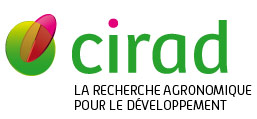Phosphorus limitation in rice systems of southeast Asian acid uplands
George T., Roder W., TrÃĐbuil G., Van Keer K.. 1996. In : Anon. Symposium on plant-soil interactions at low pH = [CongrÃĻs sur les interactions plantes-sols à faible pH]. s.l. : s.n., p. 1-10. International Symposium on Plant-Soil Interactions at Low pH. 4, 1996-03-17/1996-03-24, Belo Horizonte (BrÃĐsil).
Severe acidity and high P-fixation are characteristics of many rice upland soils in Southeast Asia. Rice yields are reported often to be limited by P deficiency, yet the extent of P limitation in these rice uplands are not known. Experiments were conducted in several farmers' fields in Laos, the Philippines and Thailand with treatments of no fertilizer (fermer practice) and near-non-limiting applications of P or N, P and K. Rice grain yield, total dry matter and P uptake with no applied nutrients averaged 1.1 t ha-1 4.0 t ha-1 and 4.4 kg ha-l, respectively. Near-non-limiting application of P alone increased grain yield, total dry matter and P uptake by 20, 24 and 57%, respectively. The P uptake response by as much as twice or more in magnitude than grain yield or total dry matter responses indicate that the grain and dry matter were at sub-optimal P contents under farmers' traditional production conditions. The responses were more pronounced when N and K were also applied; dry matter increased by an additional 1.4 t ha-1 with P+NK. The total dry matter increase with P+NK was 57%, but only 17% of this increased dry matter was partitioned to grain thus reducing the benefit from P+NK application. The data indicate that low soil P supply is limiting rice production even at the subsistance lever. Further, the low partitioning of dry matter to grain in these traditional upland varieties appears to be a serious limitation to increasing grain yield.
Mots-clÃĐs : riz pluvial; sol acide; fertilisation; phosphore; azote; rendement des cultures; teneur en matiÃĻre sÃĻche; rÃĐpublique dÃĐmocratique populaire lao; thaÃŊlande; philippines
Communication de congrÃĻs
